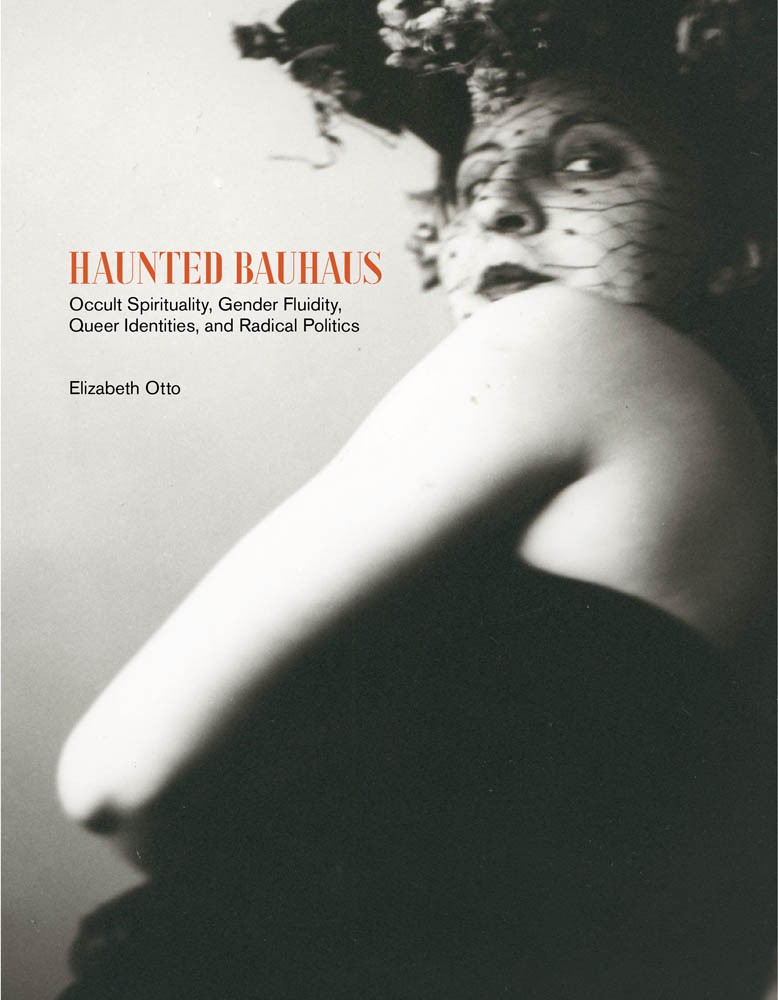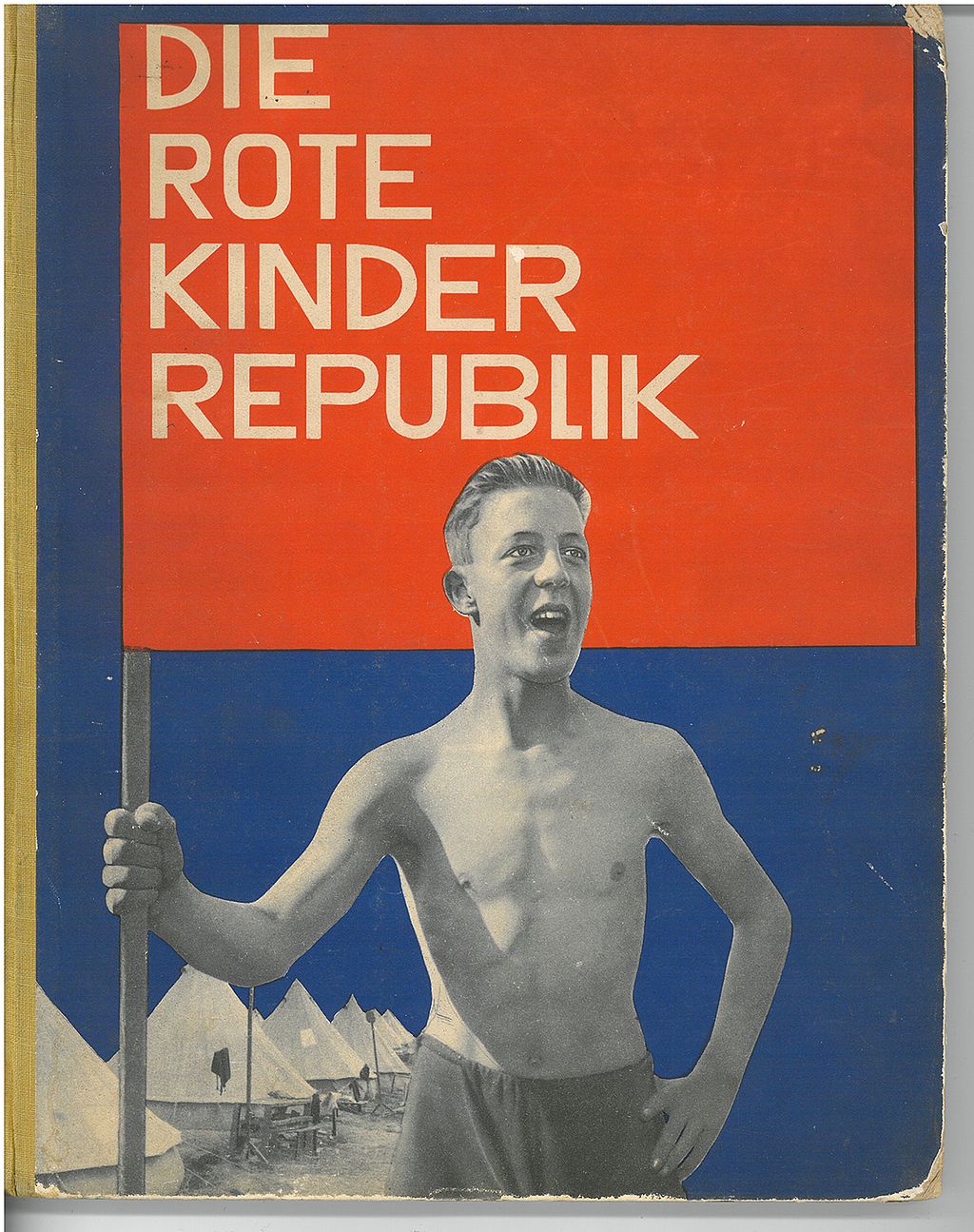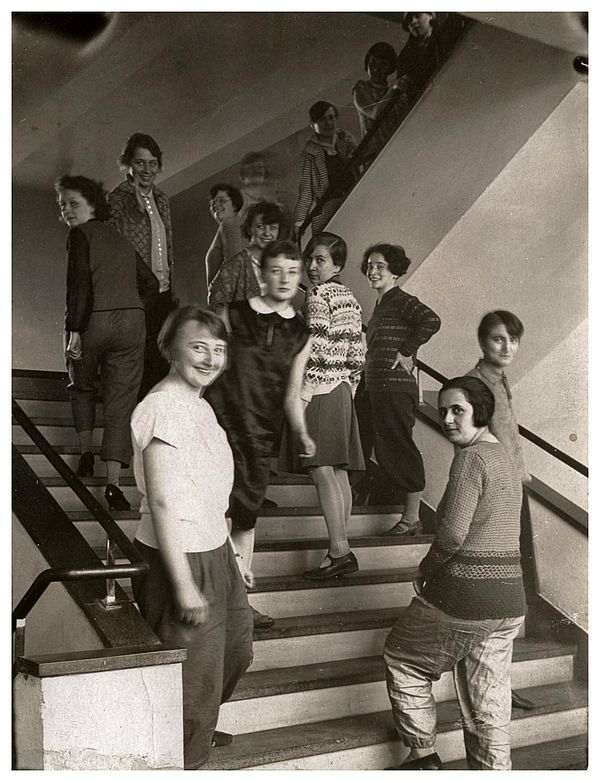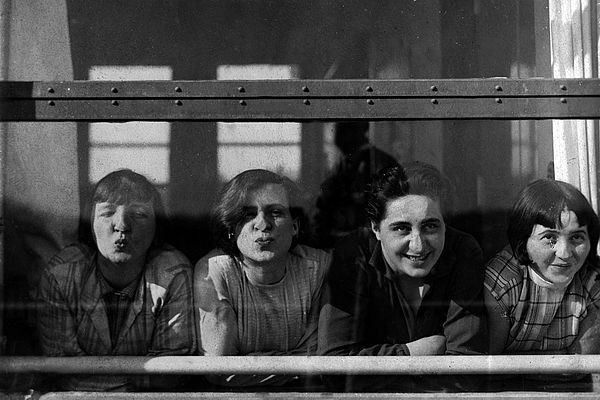"Queer people have to some extent been erased from Bauhaus history."
Interview with Elizabeth Otto
The art historian and author Elizabeth Otto adds an important chapter to the history of the Bauhaus: that of the queer creative. Her book "Haunted Bauhaus: Occult Spirituality, Gender Fluidity, Queer Identities, and Radical Politics" will be published by MIT press in September. We talked to her in advance about art in a queer context, gender at the Bauhaus, and the forgotten activist and designer Richard Grune.

Is there a queer way of life and creating art?
While there is no single queer approach to art making, there are a wide array of strategies, gestures, and signs of which queer artists have availed themselves. As my friend and colleague Jonathan Katz has pointed out, there is a long tradition of members of various subcultures communicating through coded language and imagery. Pictorial representation is particularly rich in its ability to convey multiple meanings at once through suggestion, symbols, and allegory. During Germany’s Weimar Republic, when male same-sex desire was criminalized under the Paragraph 175 and female same-sex desire was confined through social norms and even threats of violence, this “art of the code” flourished, for it allowed queer artists to communicate ideas and desires to some viewers in ways that others likely wouldn’t even notice.
And, broadly speaking, despite the interwar period’s repressive laws, it also saw a blossoming of the study of sexuality, above all in the work of sex researcher Magnus Hirschfeld, whose Institute for Sexual Science opened in Berlin in 1919—the same year the Bauhaus was founded. So, even though there were repressive forces at work, this period saw a flourishing and lively queer culture, and Bauhäusler tapped into and contributed to it.
In my “Queer Bauhaus” chapter of Haunted Bauhaus, I look at a range of art that in retrospect we can call “queer” in order to explicitly address the previously unacknowledged gay, lesbian, and transgender sexual identities of Bauhaus members. I also look at pictures that lend themselves to queer interpretations without assigning particular identities and practices to their makers.
Have queer people been edited out of the history of Bauhaus?
Yes, to a certain extent, although this can be said of so many of the over 1,200 Bauhaus members. Too often the school has been represented by just a handful of artists and designers, usually cisgender men, without regard for the diversity of people who made the institution so varied and interesting. Further, in cases of gay or lesbian Bauhaus artists who are somewhat known—such as Max Peiffer Watenphul or Florence Henri—their sexuality is almost never discussed. It is politely omitted or glossed over. This has been the tendency of art history generally, to treat sexuality and gender identity as ancillary to categories of, for example, “artistic genius.” Fortunately, art history has generally undergone a turn so that the questions probed by scholars are much broader, less formalist, and more interesting.
Additionally, drawing on the field of singleness studies, I introduce the notion of the “queer singleton” in my book, in order to move beyond assumptions that an unwed or seemingly unpartnered individual’s desires and sex life must be “hidden” if we do not know about them. While “the family maiden aunt” has become a celebrated stereotype of the unacknowledged lesbians in so many families, the idea of a queer singleton takes seriously some artists’ refusal of coupling as a key aspect of their identities and their work. Margaret Camilla Leiteritz—one of the Bauhaus’s best wallpaper designers who became an archivist and an abstract painter—is an artist I discuss in this light.
Gropius held bizarre convictions about certain forms or concepts as being masculine (the color red, the triangle) or feminine (the color blue, the square). Is this the sole source of the gender problems at Bauhaus?
While I am working to revise and broaden our view of what the Bauhaus was and who “counts” in its history, I don’t see Walter Gropius as having been particularly sexist or bigoted for his time. While he was clearly concerned that the school not be seen as overrun with women and he even made it more difficult for them to be admitted, this was more about strategic institution building within the context of a sexist world. And in fact, he was often relatively supportive of women in the institution.
By contrast, we don’t have specific evidence of Gropius’s perceptions of gay and lesbian individuals. Certainly he was very welcoming to Max Peiffer Watenphul and Florence Henri, both of whom were given a fair amount of freedom to experiment in within the school. But it’s unclear if either artist was overly “out” while at the Bauhaus. I see no evidence that the Bauhaus was particularly welcoming to queer people of its time, but it was a place to which many young people who were looking for new ways of living and being were drawn, and some of them seem to have forged queer connections and alliances there, likely under the radar.
In terms of trans individuals, while play with gender tropes and so-called “cross” dressing was acceptable within the Bauhaus’s festive party culture, trans people likewise do not seem to have been made to feel at home at the school. I discuss one case in my book of someone who we would now call a transman who was denied admission, likely due to discrimination.

Is there a difference between queer people who identify as male and queer people who identify as female when it comes to power, visibility and reward in form of money and support. To put it simply: the domination of queer artists who define themselves as male – real?
This is a tough question to answer for the interwar period because all queer artists were facing so much institutionalized and personal discrimination. I would say that a visual iconography of male same-sex desire was more clearly recognizable at the time, whereas images of lesbian desire tended to be more tenuous and provisional.
Do you believe that your research will add a new range of artists and works to Bauhaus?
Yes. In general, Haunted Bauhaus widens the lens to create a vision of the school’s aims and projects as much more diverse than has previously been understood.
A queer Bauhaus Artist you want to give a shout out?
Richard Grune spent a year at the Bauhaus and then left to become a graphic designer and leftist activist. After the Nazi assumption of power in 1933, Grune worked on anti-fascist newspapers, but his arrest in 1934 was not for his anti-fascist activities but for being gay. He would spend most of the next eleven years in concentration camps; his artwork was largely destroyed, and he himself barely survived. Because Paragraph 175 remained a part of German law until 1994, Grune was never compensated for his imprisonment or his suffering. It seems the rest of his life was difficult, and his life and work were largely ignored. But he used his skills to create a series of lithographs called The Passion of Twentieth Century in which he represented some of his horrific experiences in Nazi detention camps.
Grune’s story is tragic, but to restore queer identities to the Bauhaus and to integrate questions of gender identity, sexuality, and desire into the study of what the school was and who counts as a Bauhäusler, that to me is a triumph for all those who experienced discrimination in their own time. To paraphrase Oscar Wilde, the “Love that dare not speak its name” can now be spoken about and understood as a significant element of one of the key movements of modern art history.



